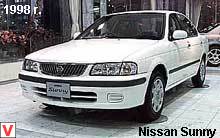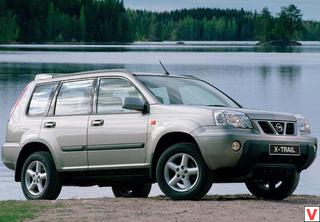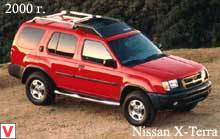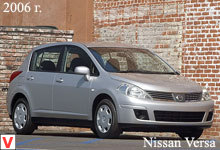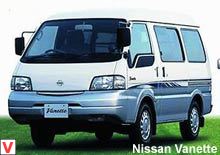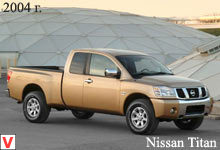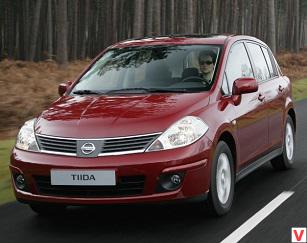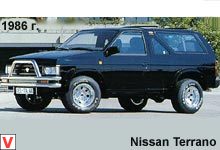
For the first time, the car, called Sunny, appeared in 1981. With his appearance, the final transition of Nissan minicars to a layout with a transverse engine took place. The car was produced in three versions: three-and five-door hatchbacks and four-door sedan.
In the role of a driving force, a choice of two engines were offered: a displacement of 1.3 to 1.6 liters, with a mechanical and automatic transmission. In 1986, the second generation Nissan Sunny appears. After the first generation did not receive much distribution in Europe, the second, released in many configurations and modifications, had to go to court. The first to debut a hatchback and a sedan, and after them the five-door station wagon AD also came out. The latter was distinguished by a large usable cargo compartment area, which increases with the rear seats folded to 1.6 m.
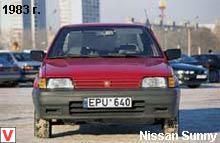
AD received a 1.6-liter engine in the carburetor and injector versions, as well as a two-liter diesel engine. Completed the range of coupe bodies, convertible and various delivery vans with both all-metal cargo bay and an open platform. For the car was offered several four-cylinder petrol engines and one 1.7 liter atmospheric diesel (54 hp). Let's make a reservation that not all motors went to the European market. Gasoline engines were presented in a working volume of 1.3 to 1.8 liters and a capacity of 60 to 125 hp. respectively. The power systems of the engines were different, but most of the machines are carburetor, injection guns are rare.
Carburetors were used as simple (but still hung with a bunch of valves and sensors), and very “hard-boiled”, with complex electronic controls. In the last year of production of this generation, fundamentally new gasoline engines of the GA series were installed (they were intended for the next, third generation of the model, but seized the second one), in which the distribution mechanism used a gas distribution mechanism, while the previous distribution mechanism driven by a toothed belt. All GA series motors have four valves per cylinder and two camshafts (DOHC).

Thanks to the original design of the tensioner and damper, they do not require attention to the timing belt drive up to 300 thousand kilometers, and sometimes more. In the brake system, disc brakes were used at the front, drum brakes at the back, and on some versions with powerful engines - fully disc brakes. The ABS was not installed on this generation, but mechanical valves were included in the brake system, distributing efforts to prevent the wheels from locking. But both with it and without it, this system has a very high resource. A few words about the equipment Nissan Sunny.
In many versions of the car there were such systems and elements as variable internal air circulation, air conditioning, front electric windows and a rear seat backrest that folds down in parts. In the salon, quite expensive materials were used, and the level of build quality was traditional for “Japanese women”, and therefore the squeaks and knocks of its elements are impossible to hear. The adjustment range of the driver's seat is very wide, which allows you to get comfortable behind the wheel of a person of any stature. True, with the front seats pushed as far as they will go, it becomes a bit cramped behind.
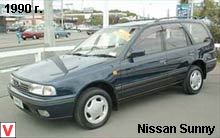
Throughout the cabin there are a variety of pockets and drawers for all sorts of small things, and in some versions, the front passenger seat is equipped with a secret pocket. It is noteworthy that over time the salon is well preserved due to the use of quality materials in the decoration. Note that excellent anti-corrosion treatment is a hallmark of Nissan Sunny. In March 1987, the hatchbacks and the Sunny sedan began to install an all-wheel drive transmission. In the summer of 1987, a 16-valve 125-horsepower injection engine with a displacement of 1.8 liters was installed on the coupe. Behind him appears the engine capacity of 1.6 l / 122 hp.
In October 1988 - the Super version comes with alloy wheels and power steering as standard. In 1989, the Sunny family undergoes a cosmetic upgrade. First of all, she touched optics, bumpers and a false radiator grille. In April 1991, in the production program of the Nissan appeared in the GTi version with a two-liter 143-horsepower gasoline engine, as well as a modification GTi-R, equipped with all-wheel drive. In addition to the all-wheel drive, the GTi-R had a turbine, which increased its capacity to 200 and even 230 liters.
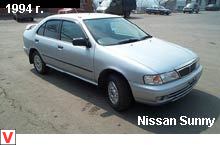
from. (depending on boost pressure). In March 1992, the Sunny family was upgraded, which traditionally touched the front of the car and the rear lights. This revived the appearance of the car and helped him to hold out on the conveyor until 1994.
And shortly before that, at the end of 1993, the GTi version was discontinued. Sunny was a small sedan, easy to drive and impeccably equipped inside. He deserved the image of a modest, undemanding, easy to maintain and reliable car.
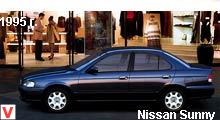
In 1995, the Nissan Sunny changed the new model Almera, but the name Sunny remained in the domestic Japanese market. In the fall of 1998, the new generation Nissan Sunny, built on the new MS platform, was introduced at the Tokyo Motor Show. An updated version of the model Sunny, designed for the Japanese market. The car with front-wheel drive or four-wheel drive, equipped with gasoline engines with electronic injection system of 1.3, 1.5, 1.6 and 1.8 liters and capacity from 87 to 175 liters. from.; five-speed manual or four-speed automatic transmission.
Other images auto Nissan Sunny
